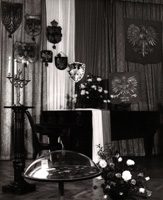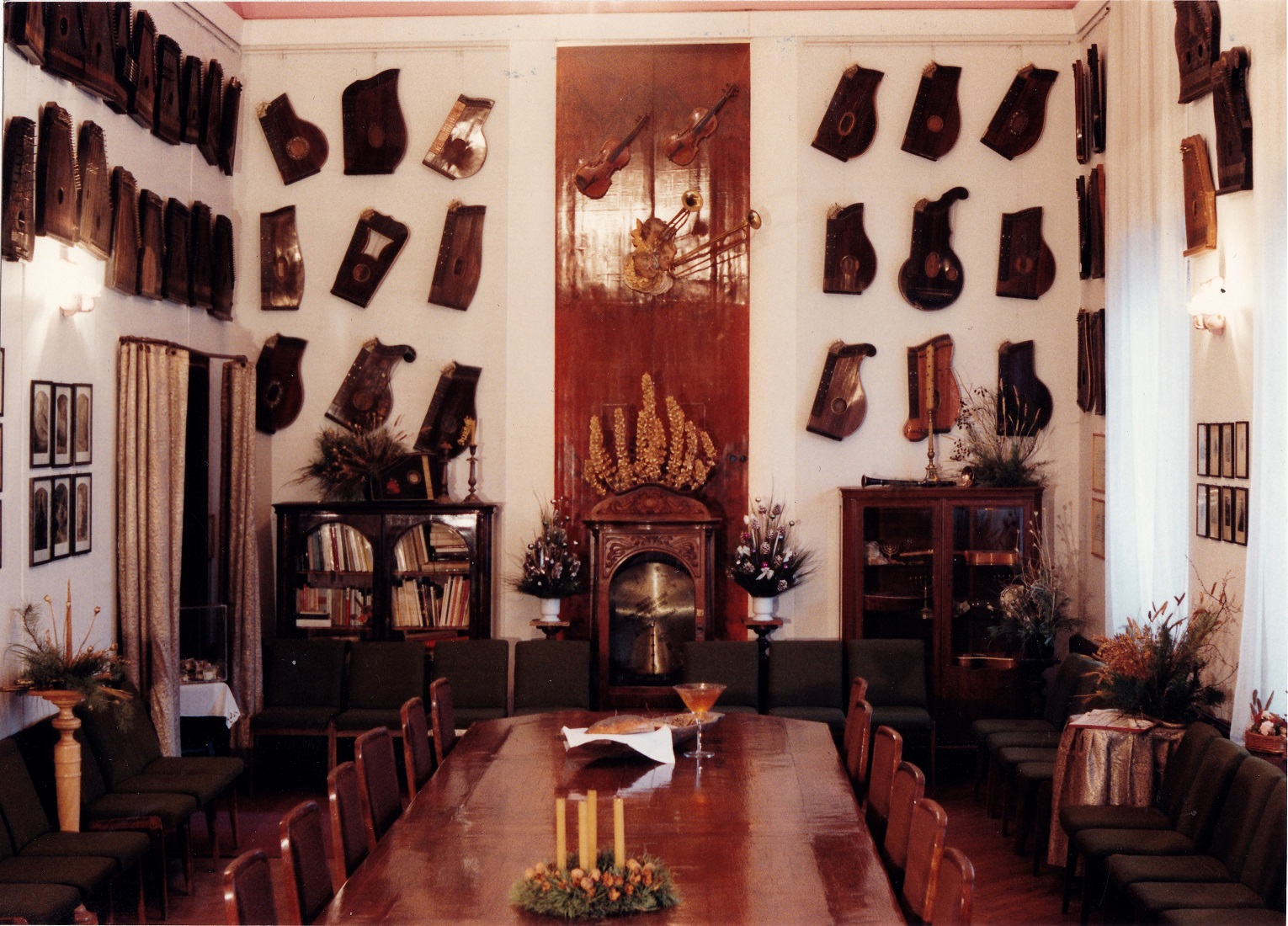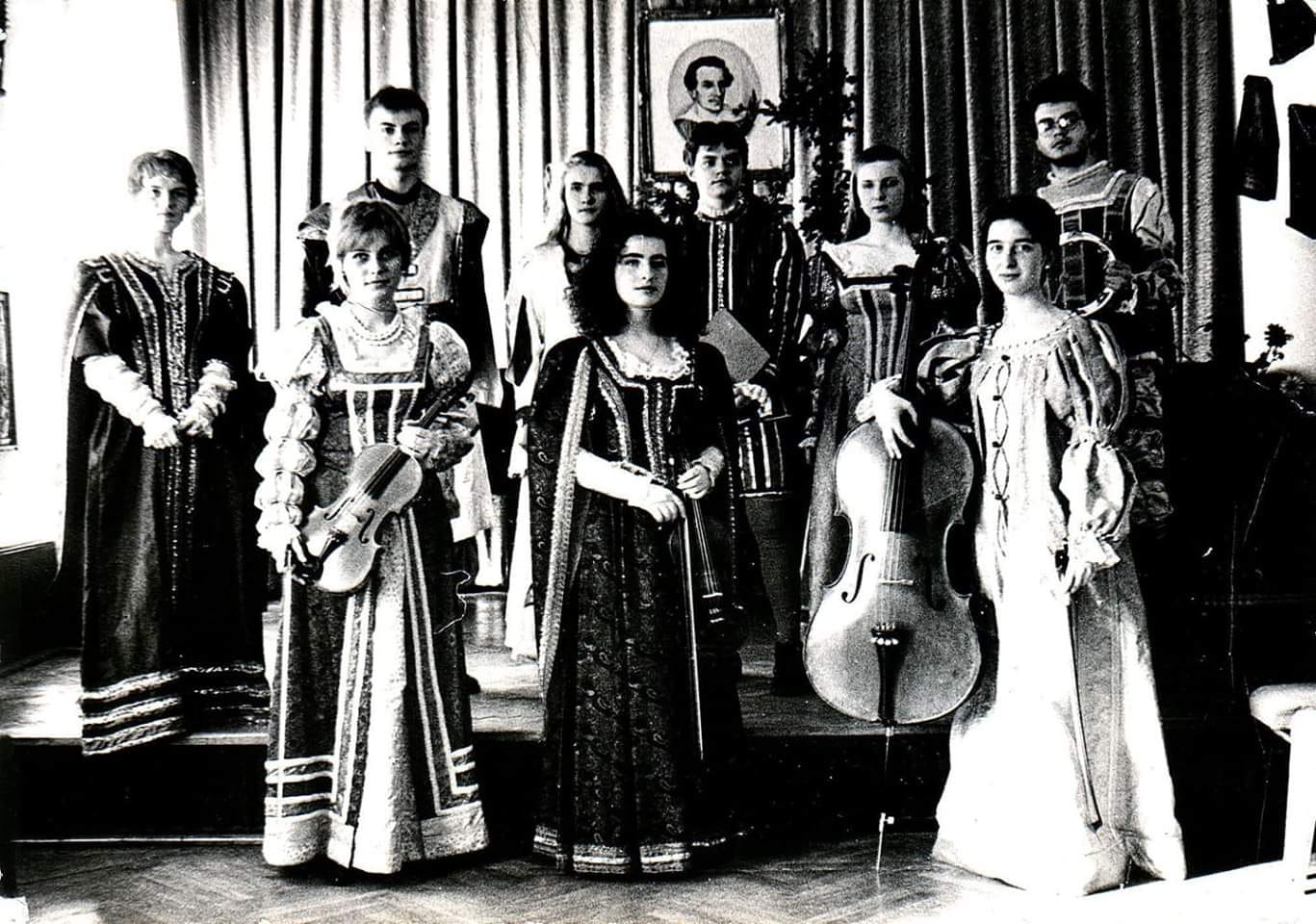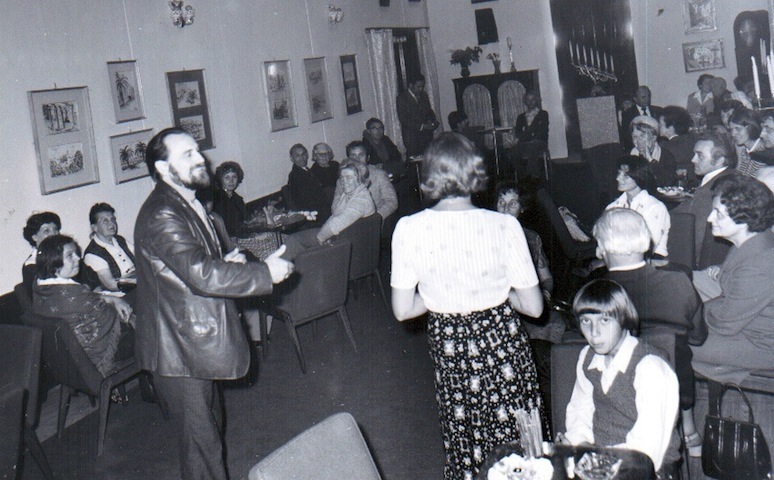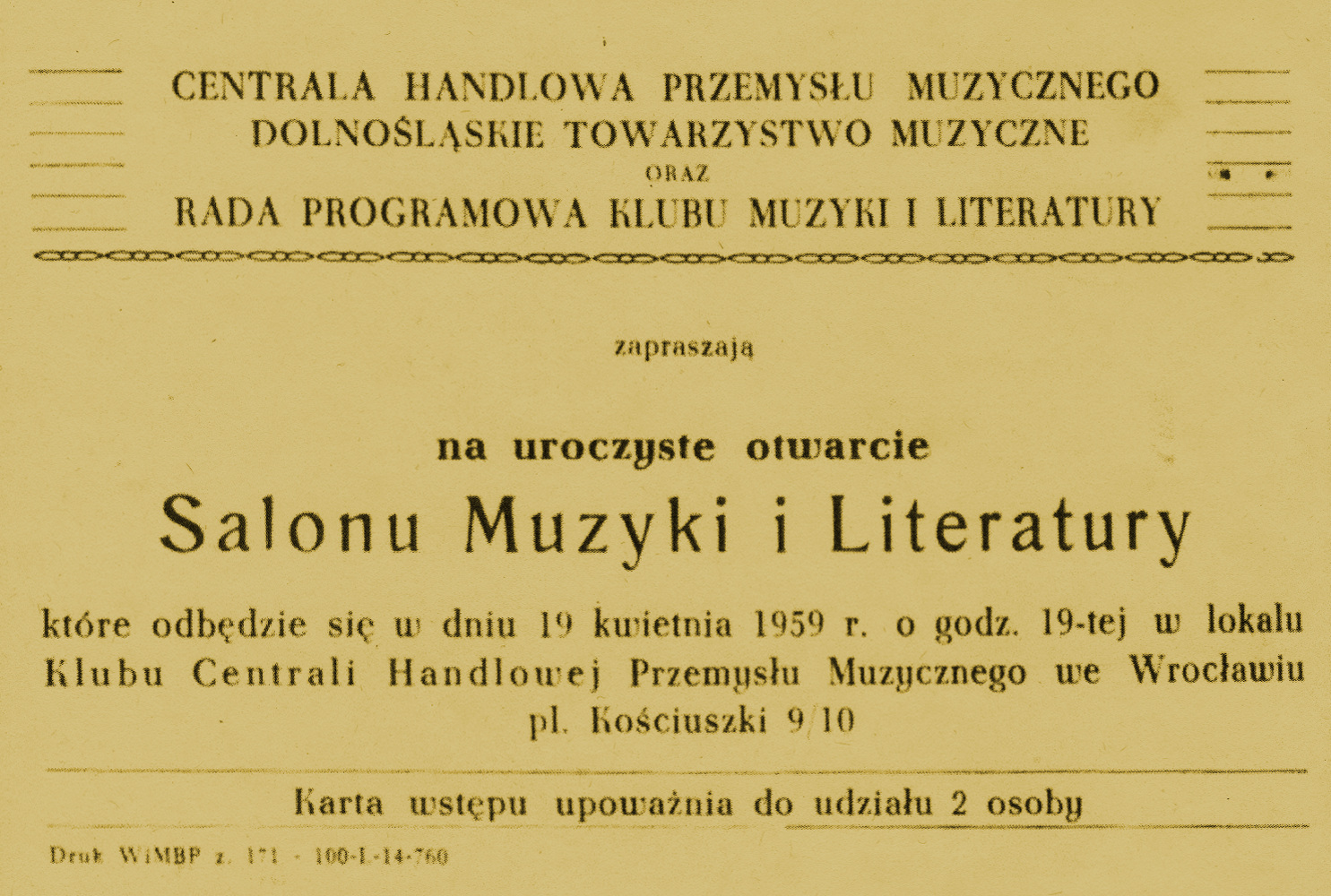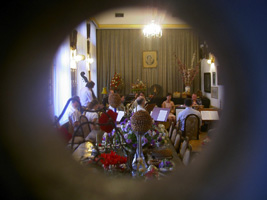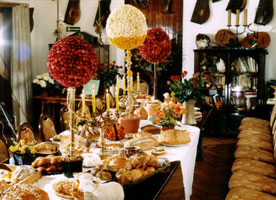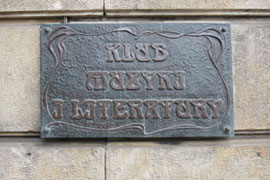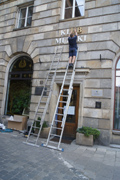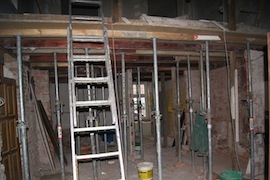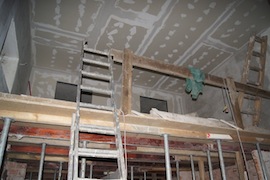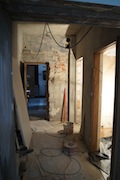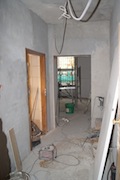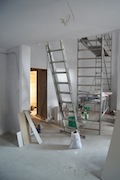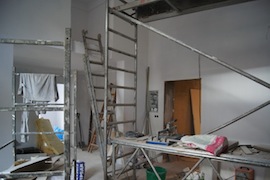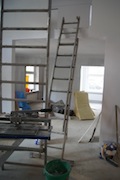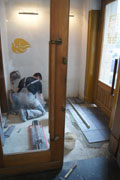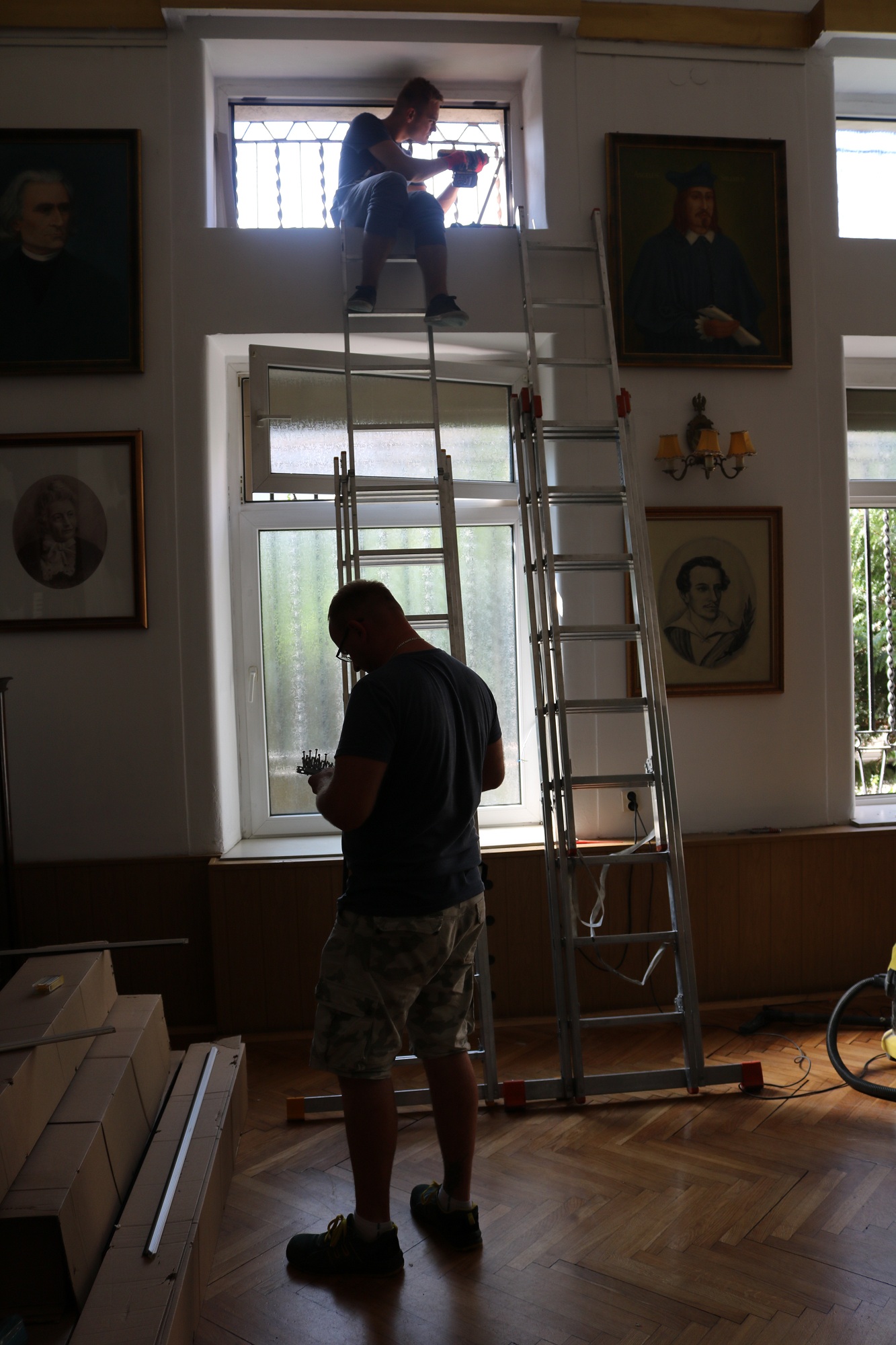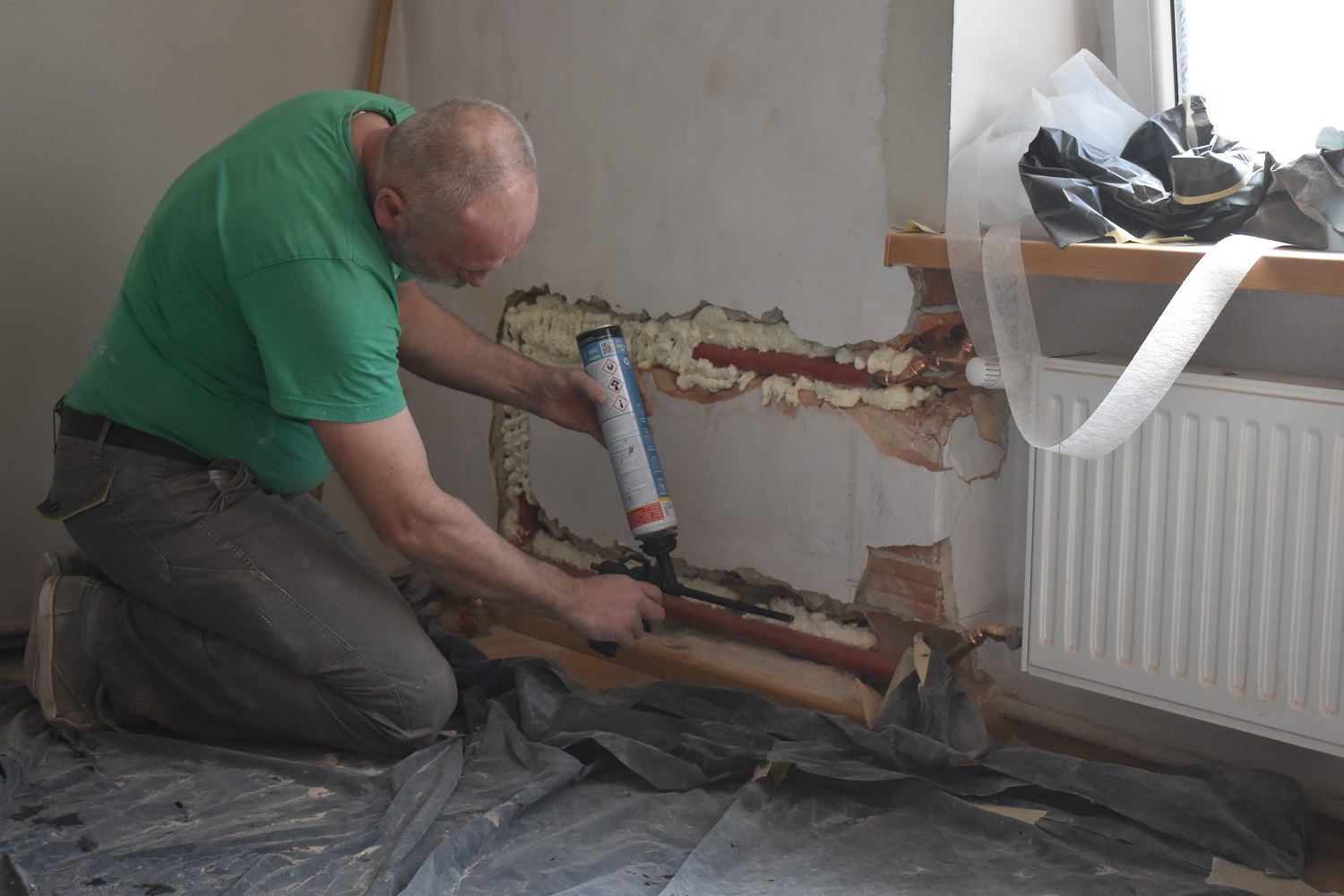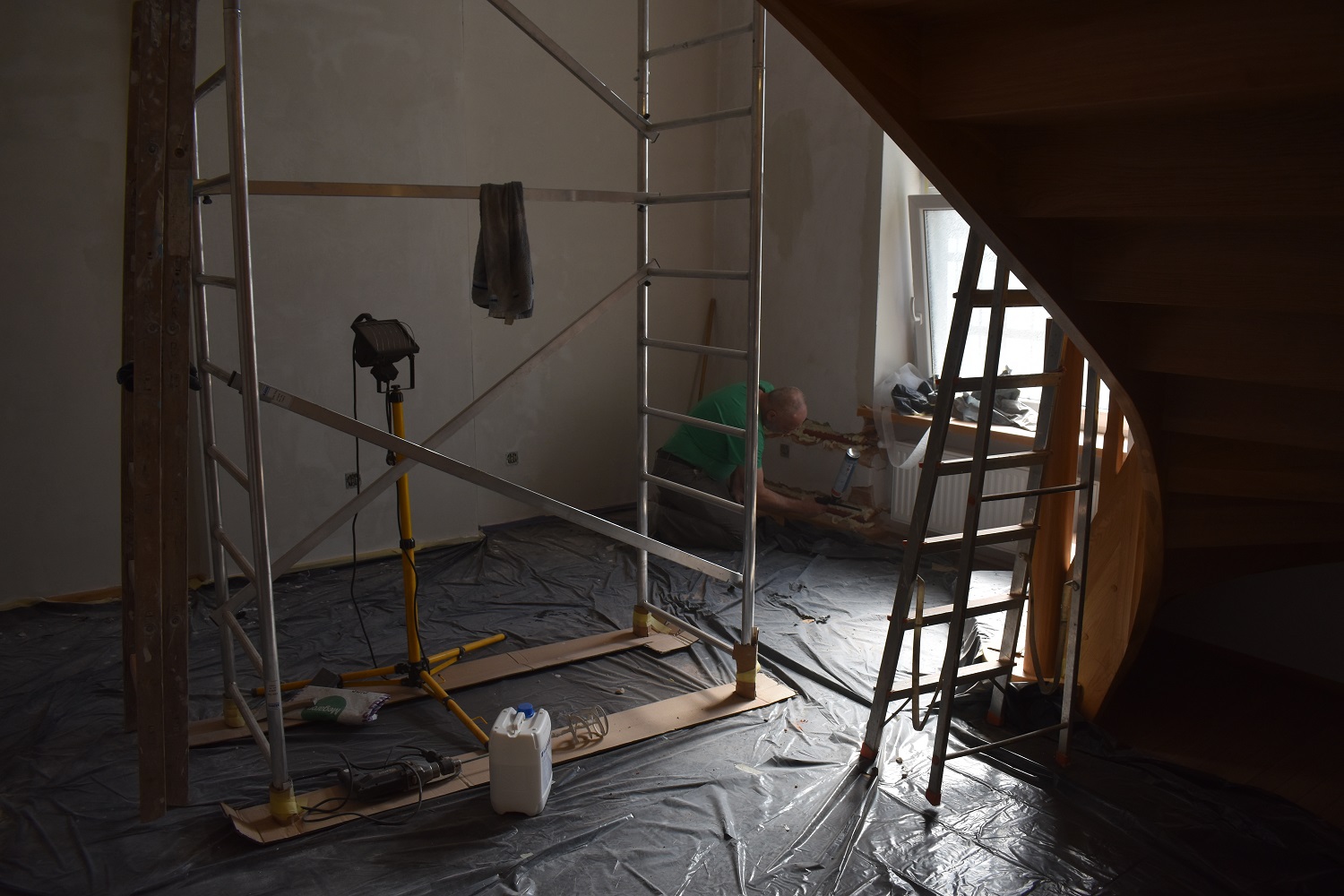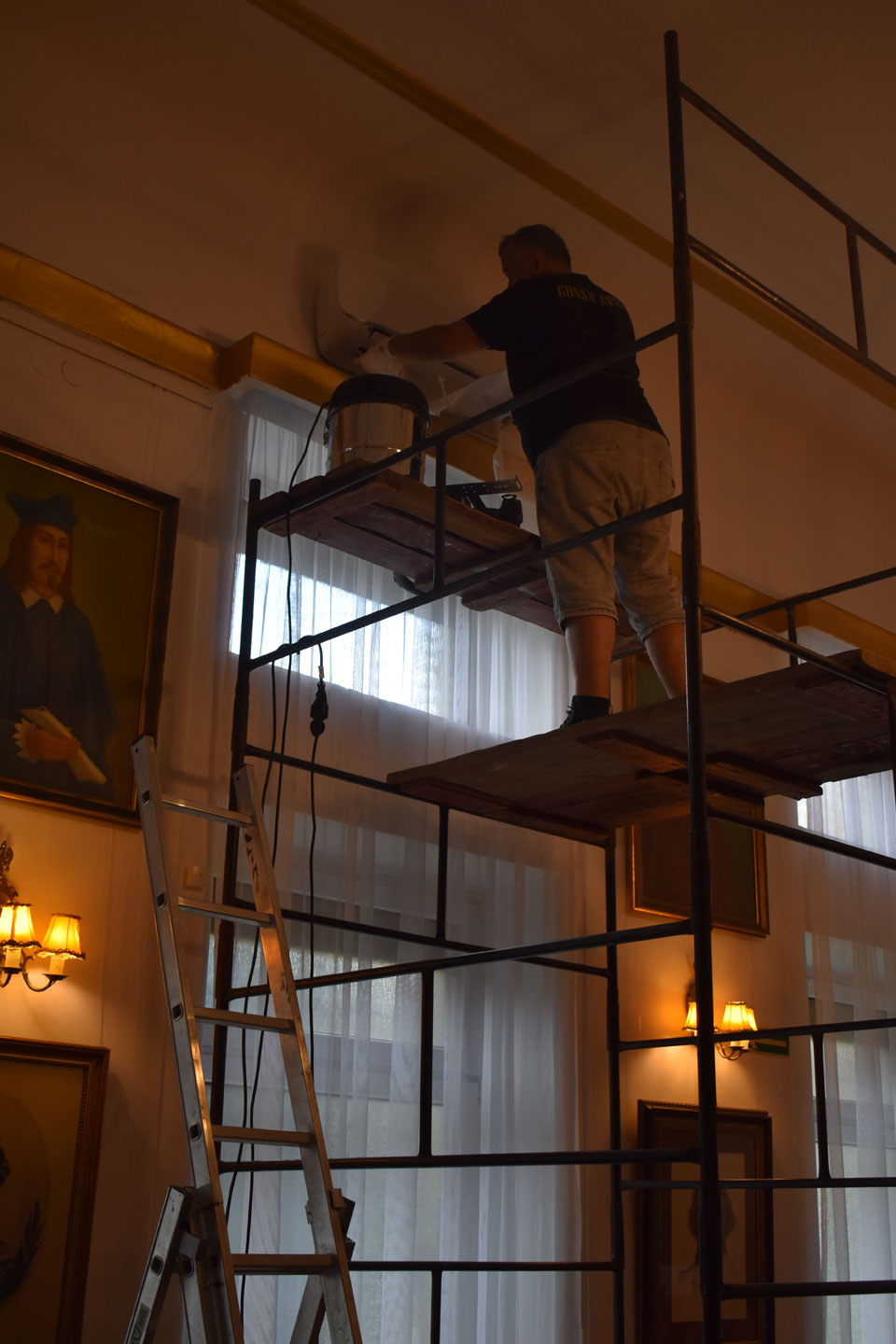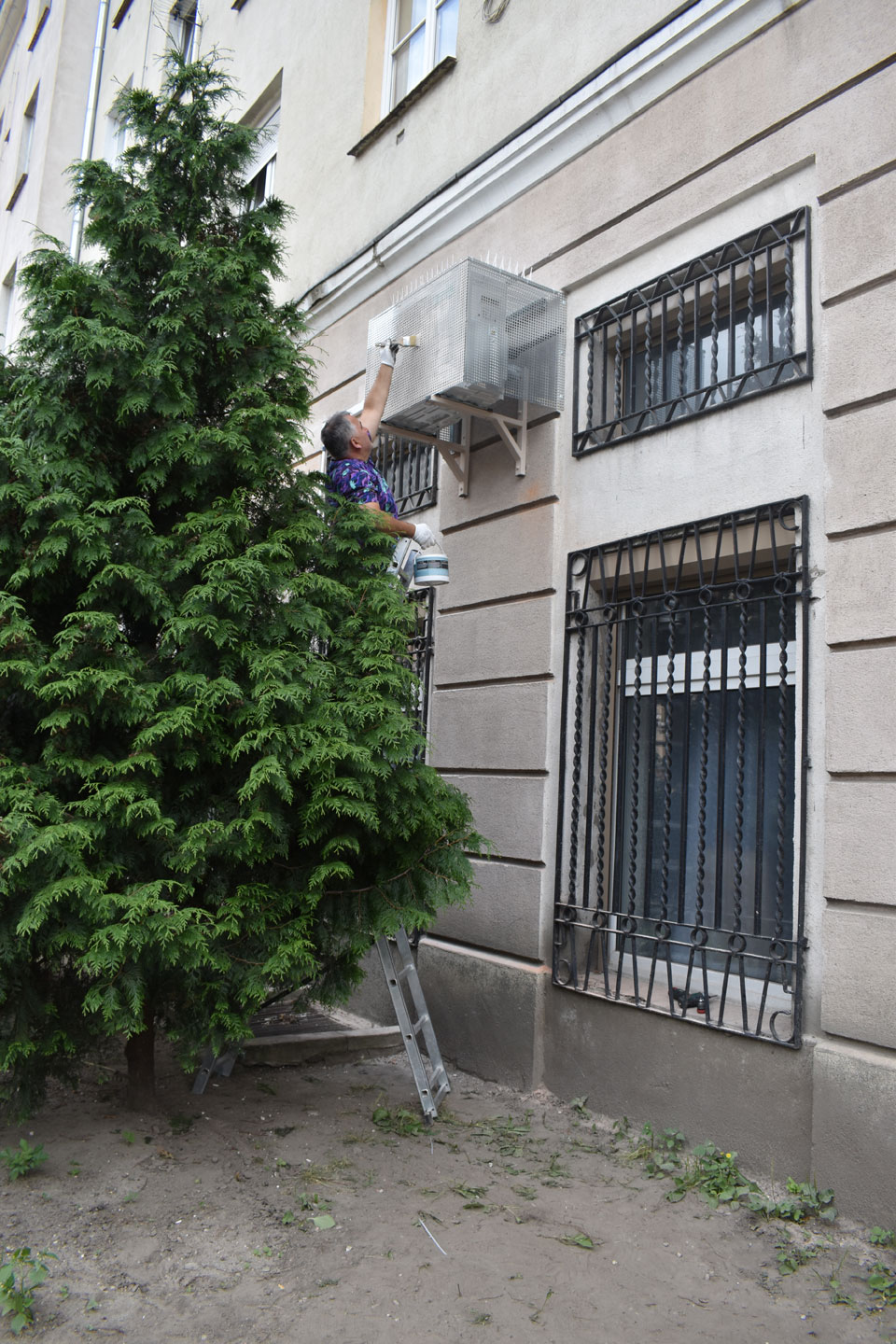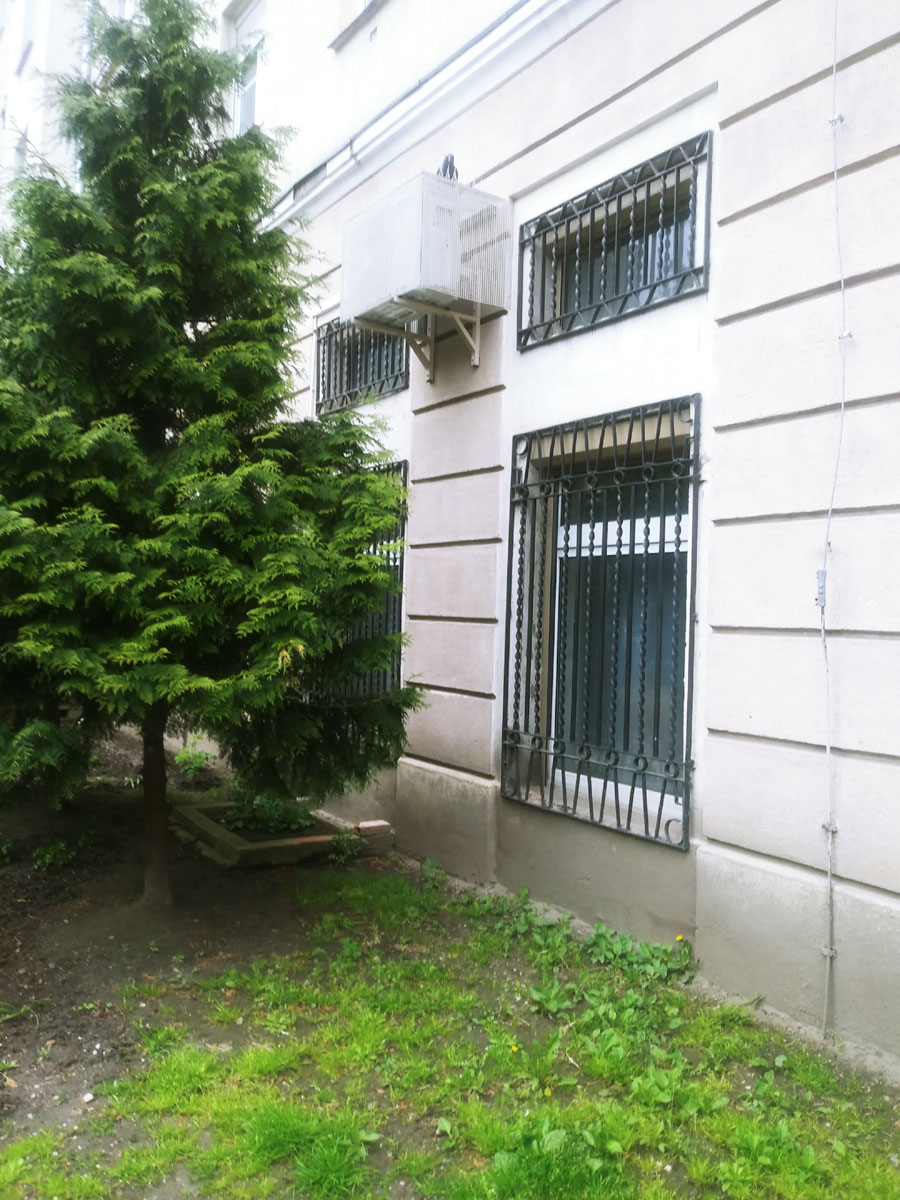History of the MiL ClubThe Wrocław Music and Literature Club has been a cultural institution of the city of Wrocław since 1991. It was established by the Lower Silesian Music Society and the Music Industry Trade Center in Warsaw. The Club's official inauguration took place on Sunday evening, April 19, 1959, and was founded by musicologist Dr. Ewa Kofin (1931–2021) and historian Dr. Bronisław Turoń (1923–1984). Initially, the MiL Club also operated under the banner of the Salon of Music and Literature. In 1963, it was transferred to the District Cinema Board (later Przedsiębiorstwo Rozpostań Filmu). From 1959 to 1961, the institution was managed by Halina Teodoryczyk, and from 1963 to 2010 by Stefan Placek (1929–2015), who introduced the Mystery of Bread, Gifts of Autumn, flower arrangement exhibitions, and special exhibitions during Easter and Christmas. He also had a rich collection of zithers and prayer books. The institution is located at 10 Gen. Tadeusz Kościuszko Square (Stare Miasto district, Przedmieście Świdnickie housing estate) in the Kościuszko Residential District, built between 1954 and 1958. The MiL Club promotes early and contemporary music (referred to as a small philharmonic) and disseminates literature. It is a place for instrumental and vocal recitals, concerts and music rehearsals (in the concert hall – portrait – there are two pianos: Steinway model B-211, Steinway model A and a Legnica M-110 piano – in the exhibition gallery), master classes in musical interpretation, lectures, meetings, literary competitions, book presentations and film screenings. The Club houses the „Akwedukt” Publishing House (established in 1999), which publishes poetry and memoirs on historical topics, including the Borderlands. Exhibitions of fine art, oil paintings, watercolors, graphics, sculptures, and photography are held here. The Club also hosts theatrical performances with a repertoire aimed at adults and young people. You can view the permanent exhibition of the Gallery of Polish Kings (photocopies) by Marcello Bacciarelli (1731–1818), photographs of Wrocław in old photographs, a collection of Polish city coats of arms (in copper) by Tadeusz Czapliński (1912–1991), and various old instruments (harmoniums, violins, trumpets, French horns, zithers, and others). The institution collaborates with Wrocław universities, schools, and numerous societies and institutions related to culture and art, both in Poland and abroad. The MiL Club serves as a meeting place for several borderland associations, including the Society of Friends of Lviv and the Southeastern Borderlands and the Wrocław Stanisławów Club. In 2013, the renovation and furnishing of the new premises acquired for the MiL Club were completed, housing an exhibition gallery (which also serves as a small concert hall), a conference room, artists' dressing rooms, and a social and utility room. Currently, the institution is fully adapted to accommodate wheelchair users, both for artists (access to the stage and dressing rooms) and for audience members (access to the auditorium). The concert hall features portraits (oil on canvas, pencil) of prominent figures in art and science, painted by Edward Kostka, Andrzej Bień, Wojciech Górka, and Paweł Jaszczuk. The collection has been in development since 2014 and is constantly growing. In 2019, the MiL Club received the Wrocław Laurel Award from the Wrocław Friends Society "for its work for the city of Wrocław and its cultural development." Materials documenting the Club's activities, including posters, playbills, programs, photographs, and invitations, are located at the Ossoliński National Institute in the Department of Social Life Documents (located in the Wrocław Contemporary Culture Office). Part of the documentation (until 2010) relating to the institution's substantive activities is currently in the possession of Wojciech Placek, including press clippings, chronicles, and a rich collection of photographs. |
Aktualności
Letnie warsztaty filmowe
„The Art of Screen Storytelling” – „Sztuka Filmowego Opowiadania”
J. Czarnecka – analiza filmu
22.08 (piątek) br. o godz. 10.00–19.00
Wstęp wolny. Obowiązują zapisy
Zapisy wstrzymane.
Saksofonowe warsztaty jazzowe
Prowadzenie: K. Urbański
26.08 (wtorek) br. o godz. 12.00–16.00
27.08 (środa) br. o godz. 12.00–16.00
Wstęp wolny. Obowiązują zapisy
Wystawa ilustracji M. Koch do książki pt. „Siedem smoków głównych”
do 26.08 (wtorek) br. o godz. 18.00
Wstęp wolny. Zapraszamy
Letnie warsztaty filmowe. Panele wykładowe
Prowadzący: J. Czarnecka, W. Todorow, M. Duffek-Bartoszewska
28.08 (czwartek) br. o godz. 10.00–19.00
Wstęp wolny. Obowiązują zapisy
Zapisy wstrzymane.
Letnie warsztaty filmowe. Panele wykładowe
Prowadzący: J. Czarnecka, W. Todorow, M. Duffek-Bartoszewska
29.08 (piątek) 2025 roku o godz. 10.00–19.00
Wstęp wolny. Obowiązują zapisy
Zapisy wstrzymane.
Letnie warsztaty filmowe
J. Czarnecka – analiza filmu
30.08 (sobota) br. o godz. 12.00–18.00
Wstęp wolny. Obowiązują zapisy
Zapisy wstrzymane.
Otwarcie wystawy ze zbiorów J. Wolniaka pt. „NSZZ „Solidarność” we wrocławskich zakładach pracy”
31.08 (niedziela) br. o godz. 12.00
Wstęp wolny. Obowiązują zapisy
Koncert pt. „Podążając za marzeniami”
M. Dudek – sopran
M. Słowikowski – fortepian
K. Kuś – prowadzenie
1.09 (poniedziałek) br. o godz. 18.00
Wstęp wolny. Zapraszamy
„Letnie czytanie wierszy”
2.09 (wtorek) br. o godz. 17.00
Wstęp wolny. Zapraszamy
Recital fortepianowy T. Maruta
3.09 (środa) br. o godz. 18.30
Koncert zamknięty
Spotkanie poświęcone książce M. Baterowicza pt. „WOJNA 1812. Quasi una fantasia”
Wprowadzenie: N. Tarczyńska
Uczestnicy dyskusji:
D. Heck
M. Dyżewski
S. Srokowski
M. Jaszczuk-Surma
4.09 (czwartek) br. o godz. 18.00
Wstęp wolny. Zapraszamy
 Spotkanie transmitowane online
Spotkanie transmitowane online
Wykład M. Dyżewskiego pt. „Muzyczne perły polskiego Średniowiecza”
Reżyseria dźwięku: Z. Jędrych
5.09 (piątek) br. o godz. 17.00
Wstęp wolny. Zapraszamy
Wykład przeniesiony:
12 listopada (środa) 2025 roku o godz. 17.00




